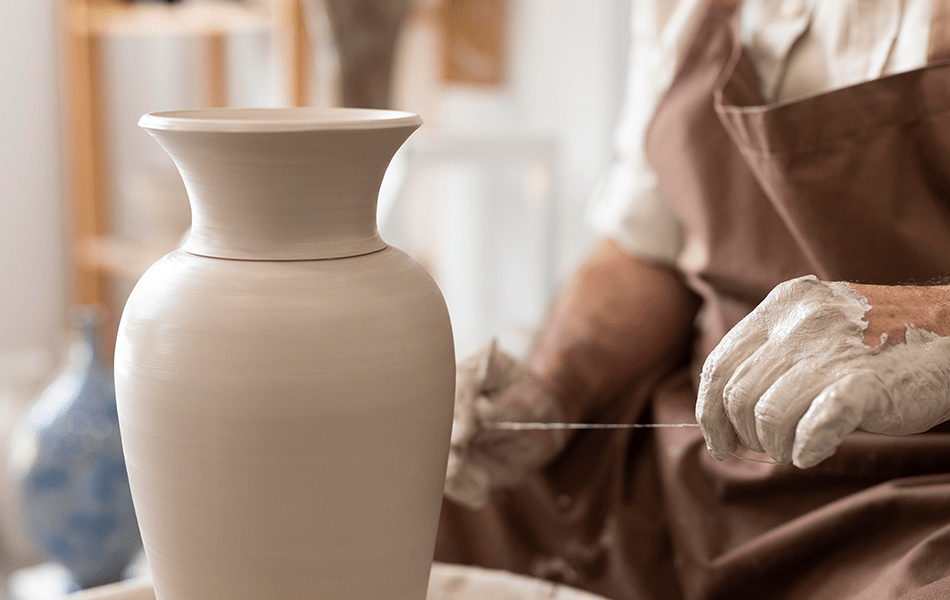In the captivating world of Philippine craftsmanship, traditional pottery stands as a testament to the exquisite artistry and cultural heritage of the nation. With a history steeped in tradition and a remarkable legacy of skilled artisans, Philippine pottery unveils a breathtaking tapestry of beauty and creativity. Embark on a mesmerizing journey as we peel back the layers of time to explore the artistry, techniques, and cultural significance of this ancient craft.
For centuries, pottery has been an integral part of Filipino culture, serving as both functional objects and vessels of artistic expression. From the rugged mountains of the Cordillera region to the sun-kissed islands of Visayas and Mindanao, each region of the Philippines boasts its unique pottery traditions and styles. The art of pottery reflects the diverse landscapes, rich cultural tapestry, and deep connection to nature that define the Filipino identity. Pottery has been the subject of both the maximalism style and the minimalism style.
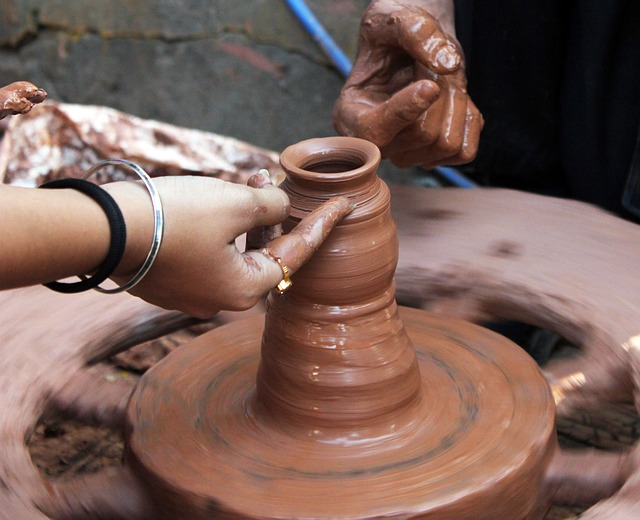
As we delve into this journey, we will witness the mastery of skilled craftsmen who breathe life into humble lumps of clay, transforming them into exquisite vessels of art. We will unravel the intricate techniques, such as coiling, slab construction, and wheel-throwing, employed by artisans across the archipelago. Moreover, we will explore the diverse range of pottery forms, from delicate vases adorned with intricate patterns to sturdy jars used for storing essentials, each bearing the distinctive touch of regional influences and the artistic flair of its creator. By delving into the world of Philippine pottery, we not only discover the beauty of the craft but also gain a deeper appreciation for the profound cultural significance it holds for the Filipino people.
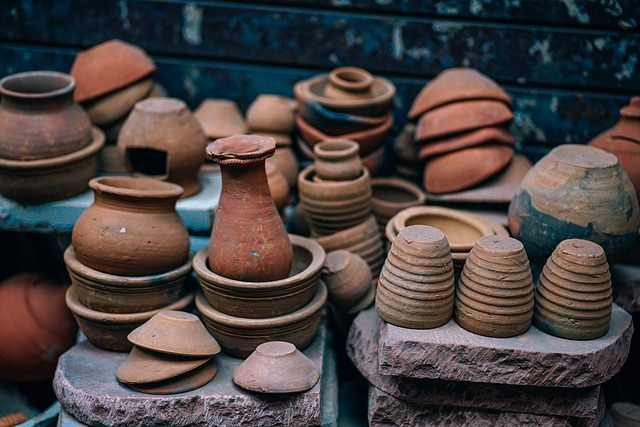
Historical Significance of Philippine Pottery
A. Exploration of pottery’s role in ancient Filipino societies: Pottery played a vital role in ancient Filipino societies, serving as a window into their cultural practices and way of life. By examining pottery artifacts found in archaeological sites, historians and anthropologists gain insights into the economic, social, and religious aspects of these ancient civilizations. Pottery was not only utilitarian but also held symbolic value, showcasing the creativity and craftsmanship of the people who made them.
B. Overview of Indigenous pottery traditions and their cultural significance: Indigenous pottery traditions in the Philippines are diverse, reflecting the rich cultural tapestry of different ethnic groups. Each community developed its unique pottery techniques, designs, and aesthetics, often passed down through generations. These pottery traditions were deeply intertwined with cultural practices, rituals, and belief systems. Pottery served as a medium to express cultural identity, preserve ancestral knowledge, and connect with the spiritual realm.
C. Highlighting the connection between pottery and daily life in traditional communities: In traditional Filipino communities, pottery was an integral part of daily life. It fulfilled practical functions such as food and water storage, cooking, and serving vessels. Pottery items were carefully crafted to meet specific needs and adapted to local environments. Additionally, pottery held cultural and social significance, being used in celebrations, rituals, and important life events. It served as a symbol of tradition, heritage, and community cohesion, connecting individuals to their roots and fostering a sense of belonging.
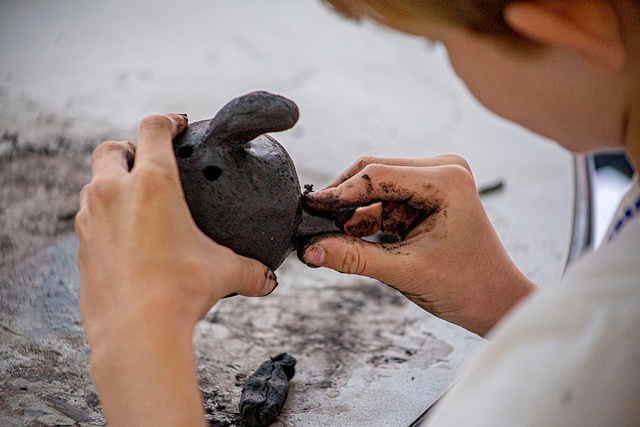
What is Kalinga Pottery making
In the lush mountainous region of Kalinga, located in the northern part of the Philippines, lies a hidden treasure of ancient craftsmanship: Kalinga Pottery. This traditional pottery art form, passed down through generations, tells the story of a rich history, remarkable facts, and a unique cultural heritage. Join us on a journey of exploration as we delve into the captivating world of Kalinga Pottery.
History and Origins: Kalinga Pottery holds a significant place in the cultural tapestry of the Kalinga people, an indigenous group renowned for their skilled craftsmanship. The origins of Kalinga Pottery can be traced back hundreds of years ago, with techniques and knowledge handed down from one generation to the next. This art form not only served utilitarian purposes but also played an essential role in ceremonial and cultural practices.
Facts and Traditions:
1. Clay Sourcing: Kalinga Pottery artisans traditionally gather clay from specific locations, selecting clay with the ideal consistency and quality for their craft. This meticulous process ensures that the pottery is durable and capable of withstanding intense heat.
2. Hand-building Techniques: Kalinga Pottery primarily employs hand-building techniques, including coiling and slab construction. Skilled artisans meticulously shape the clay by layering coils or joining slabs to create vessels of varying shapes and sizes. The precision and expertise required for this process are truly awe-inspiring.
3. Unique Firing Methods: One distinct characteristic of Kalinga Pottery is its firing process. Traditionally, the pottery is fired using an open flame in outdoor kilns, a method known as “bonfire firing.” This process imparts a unique smoky appearance to the finished pieces, adding to their aesthetic allure.
Description of Kalinga Pottery: Kalinga Pottery showcases a remarkable blend of beauty and functionality. The pottery pieces exhibit intricate patterns, geometric designs, and nature-inspired motifs, reflecting the rich cultural heritage and close connection with the surrounding environment. From graceful vases and pots to exquisite bowls and plates, each Kalinga Pottery creation tells a story of skilled craftsmanship and artistic expression.
Examples of Kalinga Pottery:
1. Traditional Storage Jars: Large earthenware pots known as “Burnay” are iconic examples of Kalinga Pottery. These vessels are used for storing grains, rice, water, and other essentials. Adorned with geometric patterns and distinctive handles, burnay jars are not only functional but also serve as cultural symbols.
2. Ritualistic Bulul Figures: Kalinga Pottery is also associated with the creation of sacred Bulul figures. These anthropomorphic sculptures represent ancestral spirits and play a crucial role in indigenous rituals and agricultural ceremonies. The pottery Bululs, often embellished with intricate details and carved features, are highly revered.
3. Everyday Kitchenware: Kalinga Pottery extends to the creation of everyday kitchenware items like plates, bowls, and cups. These vessels showcase the skilled craftsmanship and artistic sensibilities of Kalinga potters, transforming ordinary objects into beautiful works of art.
Conclusion: Kalinga Pottery stands as a testament to the rich cultural heritage and artistic prowess of the Kalinga people. Its intricate designs, unique firing techniques, and deep-rooted traditions continue to inspire awe and admiration. As we explore the history, facts, and examples of Kalinga Pottery, we uncover a world of beauty, creativity, and craftsmanship that truly makes it a treasure of Philippine cultural heritage.
Crafts Hero encourages you to discover and appreciate the artistry of Kalinga Pottery, supporting and preserving this traditional craft for generations to come.

Types of Kalinga Pottery
Kalinga Pottery, the pottery tradition of the Kalinga people in the Philippines, encompasses a variety of pottery forms. Here are some notable types of Kalinga Pottery:
1. Burnay Jars: Burnay jars are iconic vessels in Kalinga Pottery. These large earthenware jars are traditionally used for storing grains, water, and other essentials. They are characterized by their robust shape, wide mouths, and distinctive handles. Burnay jars often feature intricate patterns and designs, showcasing the artistic skill of Kalinga potters.
2. Bulul Figures: While primarily associated with the Cordillera region, including Kalinga, Bulul figures also have a connection to Kalinga Pottery. Bululs are anthropomorphic sculptures representing ancestral spirits and play a crucial role in indigenous rituals and agricultural ceremonies. In Kalinga Pottery, Bululs may be created using clay, showcasing the artistry and symbolism that intertwines with pottery traditions.
3. Everyday Kitchenware: Kalinga Pottery extends beyond ceremonial objects and includes everyday kitchenware. This encompasses plates, bowls, cups, and other functional vessels used in daily life. Kalinga potters apply their craftsmanship and artistic sensibilities to these items, resulting in beautifully crafted pieces that blend utility with aesthetics.
4. Decorative Vessels: Kalinga Pottery also includes decorative vessels that serve ornamental purposes. These vessels often feature intricate patterns, geometric designs, and nature-inspired motifs. They showcase the artistic expression and creativity of Kalinga potters, capturing the essence of the natural world and cultural symbolism.
5. Incense Burners and Ritual Objects: Within Kalinga Pottery, there are also specialized vessels created for specific ceremonial purposes. These can include incense burners, offering bowls, and other ritual objects used in indigenous practices. Such vessels are crafted with care and reverence, embodying the spiritual connection between the Kalinga people and their ancestral traditions.
These are just a few examples of the types of pottery found within Kalinga Pottery. Each type of pot also reflects the artistic traditions, cultural significance, and skilled craftsmanship of the Kalinga people, making it a captivating part of the Philippine pottery heritage.
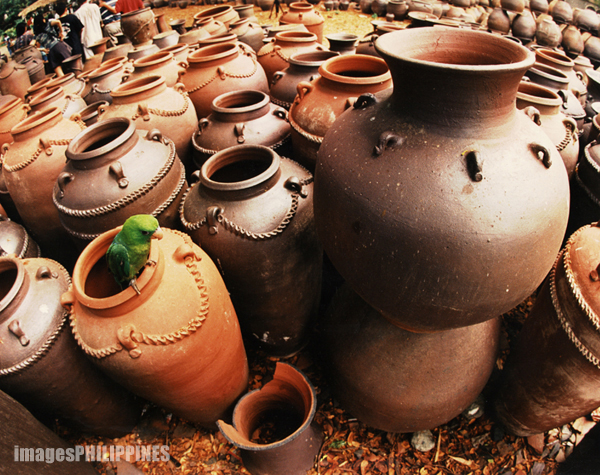
The Home-use Pottery
Within the rich tapestry of traditional pottery in the Philippines, a significant aspect is the production of home-use pottery. These functional vessels crafted by skilled artisans serve essential roles in everyday life, playing a vital role in cooking, storing, serving, and preserving. Exploring the realm of home-use pottery allows us to delve into the practicality, cultural significance, and artistic expressions that shape the domestic landscape of the Filipino people.
I. Utilitarian pottery Designs and Forms:
Among the diverse forms of home-use pottery in the Philippines, various utilitarian designs stand out. Kitchenware, including pots, pans, and bowls, are essential tools for cooking and preparing meals. These pottery items are crafted with care, taking into consideration factors like heat distribution and durability. Water containers, such as pitchers and jars, are intricately designed vessels that fulfill the practical function of storing and transporting water. Additionally, water storage pots and jars, used for preserving grains, condiments, and other essentials, play a crucial role in keeping food fresh and accessible.
II. Techniques and Construction Methods:
The creation of home-use pottery involves a range of techniques and construction methods that have been passed down through generations. Handbuilding, a traditional approach to shaping pottery, employs techniques like coiling and slab construction. Skilled potters use their hands and simple tools to shape the clay into functional forms. Wheel-throwing, another technique employed in creating home-use pottery, involves using a pottery wheel to spin and shape the clay. This method allows for more precise and consistent forms. Surface treatments like carving, painting, and glazing are applied to enhance the aesthetics and functionality of home-use pottery, adding intricate designs, colors, and protective coatings.
III. Chinese pottery and Spanish influence.
Home-use pottery in the Philippines exhibits regional styles and influences that reflect the diverse cultural landscape of the country. In the northern highlands, particularly in the Cordillera region, pottery styles and techniques unique to the indigenous communities thrive. Each community has its distinctive pottery traditions, characterized by specific forms, motifs, and clay sources. In the southern islands, including the regions of Visayas and Mindanao, pottery traditions are influenced by the cultural practices of the various ethnic groups residing in the area. Moreover, Chinese and Spanish influences have left a lasting impact on the forms and designs of home-use pottery, infusing elements of their respective ceramic traditions.
IV. Cultural Significance and Ritualistic Use:
Home-use pottery holds profound cultural significance and plays a role in various traditional Filipino rituals and ceremonies. Specific pottery forms carry symbolism and beliefs that are deeply rooted in Filipino culture. For example, the use of specific, ceramic vessels in wedding ceremonies or the presence of ancestral motifs on pottery connects individuals to their cultural heritage and ancestral roots. Home-use pottery is also essential in ritual ceremonies, where vessels may be used to hold offerings or symbolize the sacred connection between the physical and spiritual realms.
V. Preservation and Contemporary Adaptations:
Preserving traditional home-use pottery practices faces challenges in the modern era. Factors such as changing lifestyles, accessibility to mass-produced alternatives, and the declining number of skilled potters contribute to the potential loss of these invaluable traditions. However, efforts are being made to revitalize and promote the craft of home-use pottery. Various initiatives, including workshops, cultural festivals, and community-based programs, aim to revive interest in traditional pottery-making techniques and inspire younger generations to carry forward the legacy. Furthermore, contemporary innovations, influenced by modern design trends and technological advancements, are finding a place within the realm of home-use pottery, providing opportunities for creative expressions and adaptations.
The artistry and functionality of home-use pottery in the Philippines reflect the ingenuity and cultural heritage of the Filipino people. These vessels not only serve practical purposes but also embody the spirit of tradition, connecting generations and preserving cultural identity.
Conclusion
Unveiling the beauty of traditional pottery in the Philippines has taken us on a remarkable journey into the artistry of Philippine craftsmanship. Throughout this exploration, we have witnessed the rich tapestry of skills, traditions, and cultural significance embedded within each handcrafted piece. The art of traditional pottery in the Philippines reflects the deep connection between the Filipino people and their natural surroundings, as well as their profound respect for their cultural heritage. Traditional pottery serves as a timeless design trend for your Asterra Condominium.
The beauty of traditional pottery lies not only in its aesthetic appeal but also in its ability to tell stories and preserve the essence of Filipino identity. Each pottery piece is a testament to the skill, creativity, and dedication of the Filipino artisans who meticulously shape and adorn them. The intricate patterns, motifs, and forms of traditional pottery reveal a profound understanding of the natural world and a deep appreciation for the craftsmanship involved. As we conclude this journey, let us celebrate the artistry of Philippine pottery and recognize the invaluable contribution it makes to the cultural landscape of the country.
By embracing and supporting traditional pottery, we ensure its continued survival and growth. Preserving this ancient craft is not only a means of honoring the past but also a way to nurture the future. It is through the appreciation and patronage of traditional pottery that we empower Filipino artisans, inspire new generations of craftsmen, and maintain a vibrant cultural heritage. Let us continue to unveil the beauty of traditional pottery in the Philippines and promote the artistry of Philippine craftsmanship, for it is a journey that enriches our understanding of the past, strengthens our connection to the present, and shapes the artistic legacy of the future. You may also support locally made products listed here.
Written by JJM

